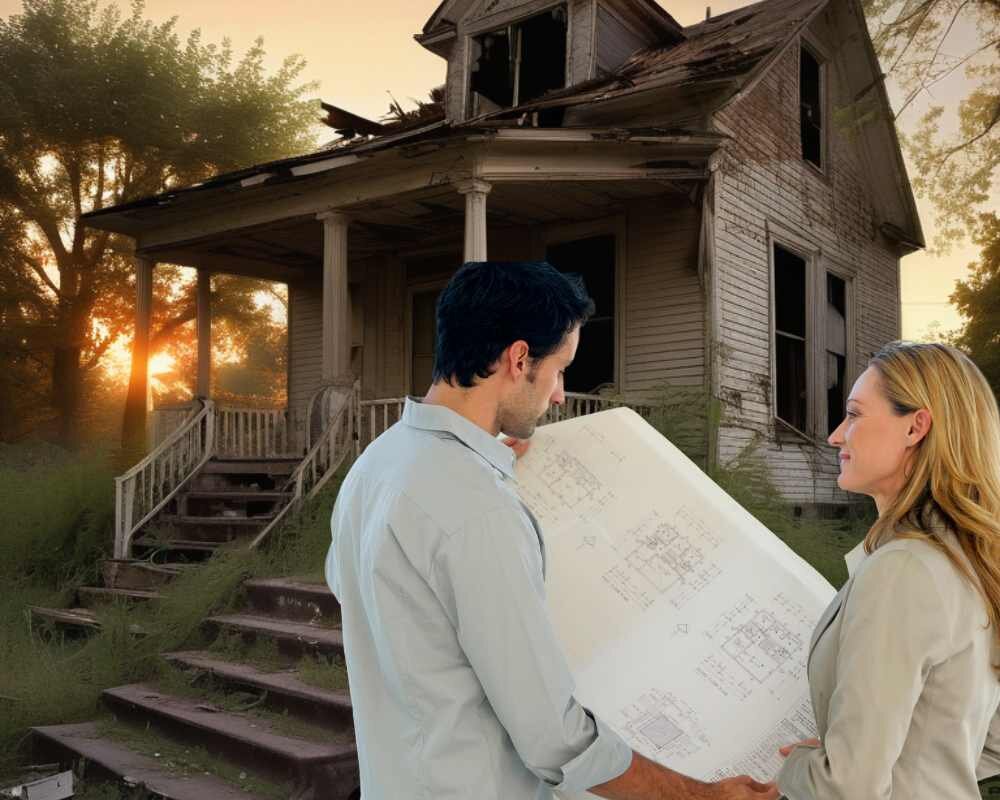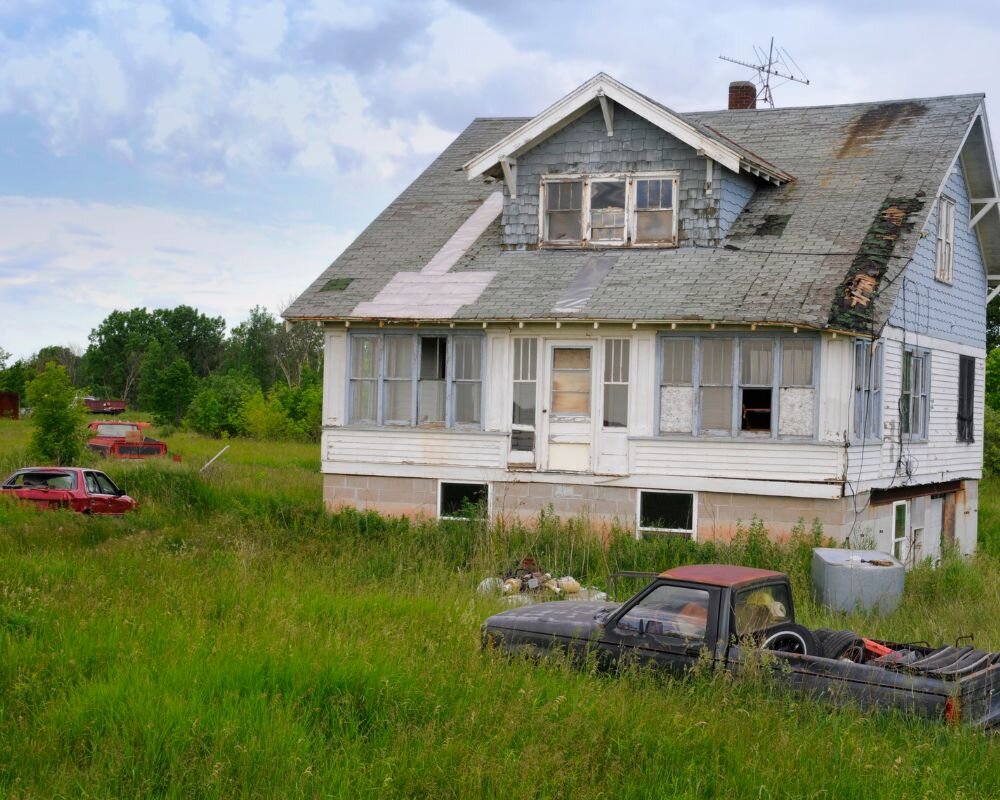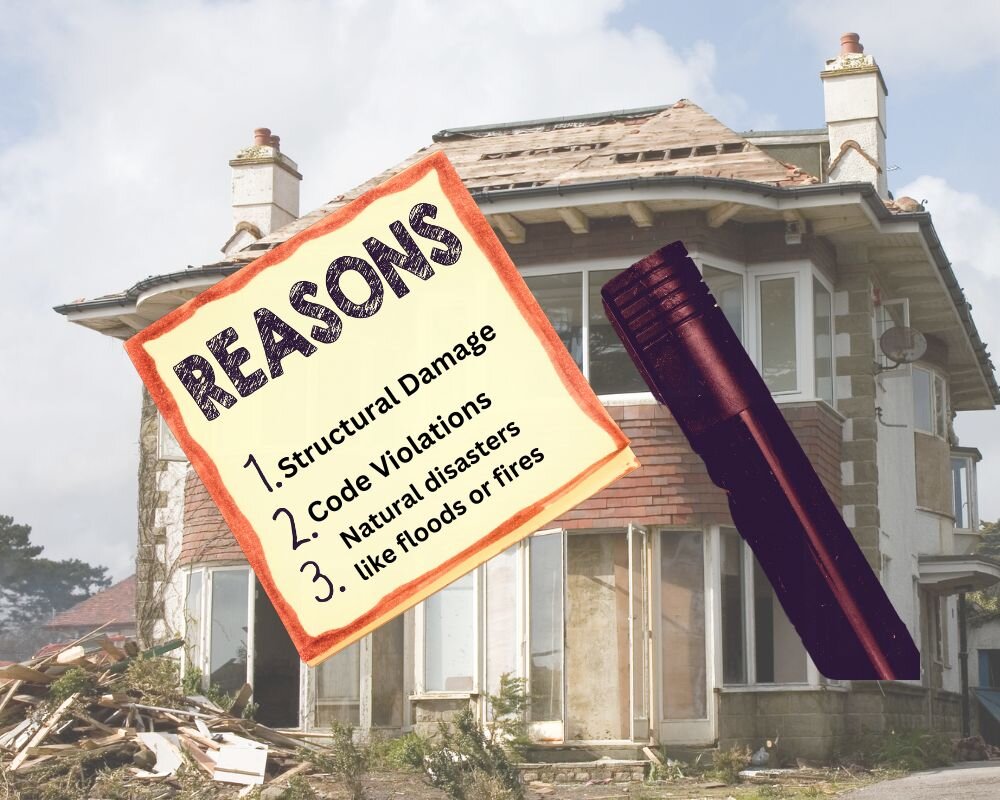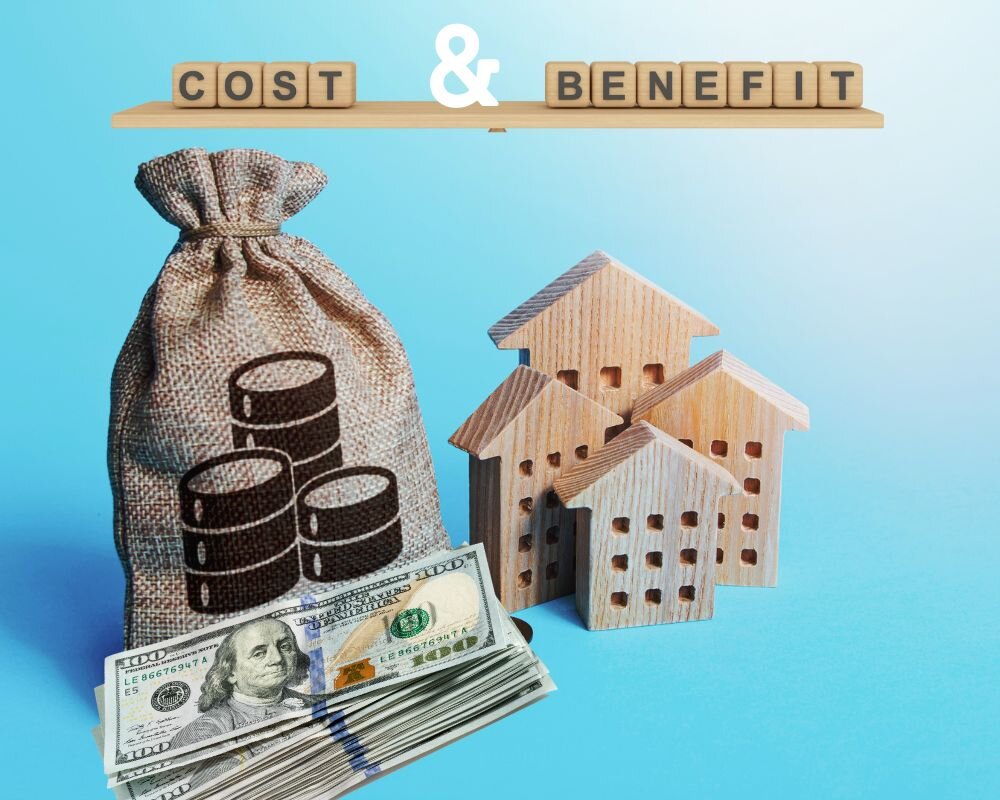
Are you looking for a unique real estate investment opportunity? Buying condemned houses in Stockton might just be the venture for you. Condemned properties are houses that have been deemed unsafe or unfit for living by local government authorities. While this may sound like a daunting prospect, condemned houses actually present a great investment opportunity for those willing to put in the time and effort to rehabilitate them.
In this beginner’s guide, we will cover everything you need to know about buying condemned houses in Stockton. From understanding what makes a house condemned to navigating the process of purchasing and rehabilitating these properties, we’ll provide you with all the information you need to get started.
Before we dive into the details, it’s important to note that buying condemned houses is not for everyone. It requires a certain level of expertise, resources, and dedication to successfully renovate and resell these properties. However, if you have the knowledge and resources or are willing to work with professionals who do, buying condemned houses can be the best option for a lucrative real estate investment strategy. So, let’s explore the world of condemned houses and discover how you can make the most of this unique opportunity in Stockton.
Key Highlights
- Condemned houses can be a profitable investment if you have the knowledge and resources to rehabilitate them and are looking to buy condemned homes.
- Understanding the reasons why a house is condemned is crucial in assessing its potential for renovation and resale.
- Buying a condemned property requires thorough research, inspections, and understanding of legal and safety requirements.
- Financing options for buying condemned houses include private lenders and traditional mortgage loans.
- Investing in condemned properties can offer high returns and contribute to neighborhood revitalization.
- FAQs: Can you get a mortgage on a condemned house? What are the common reasons houses are condemned? How long does it take to rehabilitate a condemned house?
Understanding Condemned Properties

Before you start looking into buying condemned houses, it’s important to know what they are. Condemned properties, also called blighted properties or derelict buildings, are houses that have been declared unsafe or not suitable for living by the local government.
The process of condemning a property begins when government officials, like code enforcement departments or building inspectors, find a property that is a danger to its residents or the community. This could be due to things like damage, code violations, natural disasters, or neglect over time which might culminate in the need to condemn a house.
If a property is condemned, the government will send a notice to the owner explaining why and what needs to be done. This notice often includes information on liens on the property and steps to repair the home. If the issues aren’t fixed within a certain time, the government may take legal action or even take over the property.
Condemned houses are often sold by the government or real estate agents at a lower price for buyers willing to fix them up. It’s a complicated process, so make sure you understand why the house was condemned and what it will take to make it livable again before buying.
What Makes a House Condemned?

There are a few reasons why a house might be condemned, depending on its current state, including structural damages that make it unsafe to live in a condemned house without significant rehabilitation. One big reason is if the structure is damaged, like a cracked foundation or severe water damage. This can make the house unsafe to live in. Another reason is if the house has violations of housing codes, such as peeling paint or faulty electrical systems. Natural disasters like floods or fires can also cause a house to be condemned if it’s too damaged. Sometimes, a house might be condemned simply because it’s in bad shape and hasn’t been taken care of. This can lead to pests, mold, and other problems. Understanding why a house is condemned is important when deciding if it’s worth fixing up or investing in.
The Implications of Buying a Condemned Property

Buying a condemned property comes with its own set of implications, both financial and logistical, especially if you plan to purchase the property and rehabilitate it. However, for savvy real estate investors, these implications can present unique opportunities.
When purchasing a condemned property, you often have the advantage of acquiring the property at a significantly lower price than its market value, making it a compelling option to buy condemned homes. This allows for potential high returns on investment once the property is rehabilitated and sold or rented out, appealing to those who buy or sell a condemned house.
However, it’s important to consider the costs involved in buying a condemned property. In addition to the purchase price, you will need to budget for necessary repairs and renovations. Depending on the extent of the property’s condition, these costs can vary greatly. It’s crucial to conduct a thorough inspection and estimate the costs of bringing the property up to code and making it habitable as a private owner.
Property taxes are another consideration when buying a condemned property. While the initial purchase price may be lower, property taxes are based on the assessed value of the property. If the property’s value increases significantly after rehabilitation, property taxes may also increase.
Overall, buying a condemned property requires careful financial planning and a realistic assessment of the potential return on investment. By understanding the implications and considering the necessary repairs and costs, you can make an informed decision about whether buying a condemned property is the right investment for you.
Preparing to Buy a Condemned House
Before you start looking to buy a condemned house, make sure you’re ready for the challenges and opportunities that come with this type of investment. Doing research on the local market, connecting with important resources and people such as a realtor, and understanding your finances and budget will help you succeed in purchasing and fixing up a condemned property. In the next sections, we’ll go into more detail on these topics.
Essential Resources and Contacts in Stockton
When you’re looking to buy a condemned house in Stockton, it’s important to connect with key people and organizations in the area. These experts can offer guidance and help you navigate the process. Here are some important contacts to keep in mind:
- Real estate agent: A knowledgeable agent who specializes in distressed properties can assist you in finding potential homes and negotiating a deal, especially if you’re looking to buy a condemned property and repair the home.
- Local government: Local agencies like building inspectors and code enforcement departments can provide information on property status and legal requirements.
- Private lender: If you can’t get a traditional loan, a private lender focusing on distressed properties can help with financing for the purchase and renovation.
By establishing relationships with these contacts, you’ll have the support and knowledge you need to successfully purchase and renovate a condemned property in Stockton.
Financial Considerations and Budget Planning
When you’re thinking about buying a condemned house, it’s really important to think about your financial situation and plan out your budget well. First, take a good look at how much money you can comfortably spend on buying and fixing up a condemned house. Consider your savings, any credit you have, and different ways you can get money, especially if you want to sell your house and invest in a condemned property. Next, make a detailed budget by estimating how much it will cost to buy the house, make necessary repairs, and cover ongoing expenses like property taxes and insurance, particularly if planning to sell the house afterward. Look into different options for getting money, such as regular mortgage loans or loans from private lenders, and pay attention to things like interest rates and repayment terms. Be prepared for unexpected costs by setting aside extra money just in case. It’s also a good idea to seek advice from a financial advisor or mortgage lender to help you better understand your financial situation and figure out the best way to finance your project. By carefully considering your finances and creating a solid budget, you can ensure that you have the resources you need to successfully buy and fix up a condemned house in Stockton.
Beginner’s Guide to Buying Condemned Houses
Now that you have prepared yourself financially and built a network of resources and contacts, let’s dive into the step-by-step process of buying condemned houses. In this section, we will provide a beginner’s guide to buying condemned houses in Stockton, covering everything from researching condemned properties to finalizing the sale and planning for rehabilitation.
Step 1: Researching Condemned Properties in Stockton
The first step in buying a condemned house is to research available properties in Stockton. Here’s how to get started: identify a property, check for any liens on the property, and understand the process to repair the home or possibly live in a condemned house after renovations.
- Research condemned properties: Look for listings of condemned properties through local government websites, real estate agents specializing in distressed properties, or online platforms that cater to real estate investors.
- Evaluate the potential: Consider the location, condition, and potential value of the condemned properties you come across. Look for properties that have the potential to be rehabilitated and offer a good return on investment.
- Assess the value of the land: Determine the value of the land on which the condemned property is situated. This will help you assess whether the overall investment is worth pursuing.
- Network with other real estate investors: Connect with local real estate investors who have experience buying condemned properties. They can offer valuable insights and advice based on their own experiences.
Step 2: Conducting a Thorough Inspection
Once you have identified a potential condemned property, it’s crucial to conduct a thorough inspection to assess its condition and identify any structural issues before you sell the house. Here’s what to consider during the inspection process:
- Hire a professional inspector: Engage the services of a qualified home inspector who has experience with condemned properties to ensure you’re making a worthwhile investment or before you sell a house. They will be able to identify any structural damage and assess the overall condition of the property, providing valuable insight for those looking to purchase the property and undertake necessary repairs.
- Evaluate the extent of the damage: Determine the severity of any structural damage and assess whether it is within your capacity and budget to repair. Significant structural damage may require extensive repairs that could impact the feasibility of the investment.
- Consider other potential issues: In addition to structural damage, inspect for other issues such as plumbing or electrical problems, mold, or pest infestation which could affect the ability to buy or sell a condemned home. These issues can add to the overall cost and complexity of the rehabilitation process.
Step 3: Understanding Legal and Safety Requirements
Before finalizing the purchase of a condemned property, it’s essential to understand the legal and safety requirements that need to be addressed. Here’s what you need to consider:
- Review local building codes: Familiarize yourself with the local building codes and regulations that govern the rehabilitation of condemned properties. Ensure that you have a clear understanding of what is required to bring the property up to code.
- Obtain necessary permits: Determine the permits and approvals that are required for the rehabilitation process. Consult with local government authorities or building departments to ensure that you comply with all necessary legal requirements.
- Address safety concerns: Identify and address any safety concerns associated with the property. This may include securing the property to prevent unauthorized access or addressing hazardous conditions such as mold or asbestos.
Step 4: Negotiating the Purchase Price
Once you have completed the inspection and have a clear understanding of the property’s condition, it’s time to negotiate the purchase price. Here are some tips for successful negotiation:
- Research comparable properties: Use the information you have gathered about the property’s condition and potential value to determine a fair purchase price. Research comparable properties in the area to support your negotiation.
- Engage a real estate agent: Work with a real estate agent who specializes in distressed properties. They can provide valuable insights and guidance during the negotiation process and help you secure the property at a fair price.
- Be prepared to walk away: Set a maximum purchase price that aligns with your budget and investment goals, especially when considering the additional costs of rehabilitating a condemned building. If the seller is unwilling to negotiate within price range when you want to buy or sell a condemned house, be prepared to walk away and explore other opportunities.
Negotiating the purchase price is a critical step in buying a condemned property. By conducting thorough research, working with a real estate agent, and being prepared to walk away, you can secure the property at a fair price that aligns with your investment objectives.
Step 5: Finalizing the Sale and Planning for Rehabilitation
Once you have agreed on the purchase price, it’s time to finalize the sale and start planning for the rehabilitation process. Here’s what you need to consider:
- Secure financing: If you haven’t already arranged for financing, now is the time to secure the necessary funds. This can be done through a private lender, traditional mortgage loan, or other financing options.
- Complete the paperwork: Work with your real estate agent or attorney to ensure that all necessary paperwork, including any relevant liens on a condemned home, is completed accurately and on time. This includes the purchase agreement, title search, and any other legal documents required for the sale.
- Plan for rehabilitation: Develop a detailed plan for the rehabilitation process, including necessary repairs, renovations, and estimated costs. Consider working with contractors and other professionals to ensure the work is done to code and within budget.
- Create a timeline: Establish a timeline for the rehabilitation process, taking into account any permits or approvals that may be required. Set realistic deadlines for each stage of the project to ensure a smooth and efficient process, particularly when planning to repair the home to meet or exceed local housing standards.
Navigating Challenges with Condemned Houses
Buying and rehabilitating condemned houses can present unique challenges, especially when trying to navigate liens on the property or determining if the home is condemned. From dealing with legal hurdles to financing rehab and renovation projects, including potential foreclosure, it’s important to be prepared for these obstacles. In the following sections, we will explore how to handle legal issues and navigate the financing process when it comes to condemned houses.
Dealing with Legal Hurdles
When dealing with condemned houses, there may be legal hurdles that you need to address, including resolving any liens on the property before you can repair the home. Here are some common legal issues you may encounter:
- Eminent domain: In certain cases, the local government may exercise its power of eminent domain to acquire a property for public use. This can complicate the process of buying and rehabilitating a condemned house, as the government may have the right to seize the property.
- Condemnation process: Understanding the condemnation process is crucial to navigate any legal hurdles. Familiarize yourself with local laws and regulations governing condemned properties to ensure that you comply with all legal requirements, including those for properties condemned by the local government.
- Work with legal professionals: Consult with an attorney who specializes in real estate law to ensure that you understand your rights and obligations when dealing with condemned houses. They can provide guidance and help you navigate any legal challenges that may arise.
By working with legal professionals and familiarizing yourself with the laws and regulations surrounding condemned properties, you can mitigate legal hurdles and protect your investment.
Financing Rehab and Renovation Projects
Financing the rehab and renovation of a condemned house can be challenging, as traditional lenders may be hesitant to provide financing for a property in a distressed condition. Here are some financing options to consider:
- Private lenders: Private lenders specializing in distressed properties may be more willing to provide financing for the purchase and rehabilitation of a condemned house. These lenders often have flexible terms and can provide funding quickly, making it possible to buy a condemned house with less hassle.
- Traditional lenders: While traditional lenders may be more cautious when it comes to financing condemned houses, due to issues like liens, it’s still worth exploring this option. Some lenders offer renovation loans or home equity lines of credit that can be used for rehab projects.
- Self-funding: If you have the necessary funds, self-funding the rehab and renovation project is another option, providing you’re ready to get started on transforming a condemned property into a livable home or second home. This allows you to avoid the challenges of securing financing and gives you complete control over the renovation process.
It’s important to consider the interest rates, repayment terms, and eligibility requirements of each financing option when looking to buy a condemned home. By exploring different financing avenues, you can find the best solution for your specific needs and secure the necessary funds to renovate the condemned property.
Advantages of Investing in Condemned Properties
Investing in condemned properties can be a smart move for real estate investors. Here are the main benefits:
- High returns: Buying distressed properties for a low price can lead to making a lot of money when you fix them up and sell or rent them out. If you’re ready to get started, purchasing these properties can be a lucrative venture.
- Neighborhood improvement: Fixing up condemned properties can help make the area nicer and more attractive, turning rundown neighborhoods into thriving communities.
- Value increase: As the area gets better and the market improves, the value of the condemned property can go up, giving you a chance to make even more profit.
- Diversification: Adding distressed properties to your investment mix can help balance the risks and rewards of your overall investment strategy.
However, investing in condemned properties has its challenges. It’s important to plan carefully, do your research, and understand the local market and laws, especially when looking to buy or sell a condemned home. Working with experts and doing thorough research can help you make the most of the advantages while minimizing risks when you buy or sell a condemned house.
Potential for High Returns on Investment
One of the primary advantages of investing in condemned properties is the potential for high returns on investment. By purchasing a condemned property at a significantly lower price, you have the opportunity to add value through rehabilitation and attract tenants, ultimately increasing the property’s value. Here’s how you can maximize the potential for high returns:
- Conduct thorough research: Identify properties with high potential for value appreciation based on location, market trends, and the neighborhood’s potential for growth.
- Estimate the after-repair value (ARV): Assess the potential value of the property after rehabilitation. This will help you determine the maximum price you should pay for the property to ensure a favorable return on investment.
- Develop a detailed renovation plan: Create a plan that outlines the necessary repairs and improvements to increase the property’s value. This will help you estimate the renovation costs and ensure that the property is brought up to a desirable standard.
- Monitor the market: Stay informed about market trends and changes in the local real estate market. This will help you make informed decisions about when to sell the property for maximum returns.
By carefully assessing the potential returns on investment and implementing effective renovation strategies, you can maximize the profitability of buying a condemned building.
Contributing to Neighborhood Revitalization
Investing in condemned properties not only offers the potential for financial returns but also provides an opportunity to contribute to neighborhood revitalization and community development. Here’s how investing in condemned properties can make a positive impact: by rehabilitating condemned buildings, you can contribute to community revitalization.
- Restoring neglected properties: By rehabilitating condemned properties, real estate investors can transform blighted houses into beautiful homes. This improves the overall aesthetics of the neighborhood and enhances its desirability.
- Increasing property values: As renovated properties enter the market, they can increase property values in the surrounding area. This benefits not only the investor but also other homeowners in the neighborhood.
- Attracting new residents and businesses: Renovated properties can attract new residents and businesses to the neighborhood, contributing to its revitalization and economic growth.
- Enhancing community pride: A revitalized neighborhood instills a sense of pride and community among its residents. It fosters a positive environment and encourages further investment and improvements, particularly for those who purchase the property and successfully transform it from condemned to coveted.
By investing in condemned properties and contributing to neighborhood revitalization, real estate investors can make a lasting positive impact on communities while generating financial returns.
Final Thoughts
As we wrap up, remember that investing in condemned houses in Stockton can actually be a great way to make money if you do it right. It’s important to understand the rules, money stuff, and safety concerns before diving into buying a condemned home. By following a step-by-step process – from doing research to fixing up the property – you can handle any challenges that come your way. Condemned properties have the potential to bring in a lot of cash and can help improve the neighborhood. If you’re thinking about giving this a try, make sure to get thorough inspections, follow all the rules, and plan your budget carefully. With the right info and resources, buying condemned houses in Stockton could be a fantastic opportunity for new investors or those who buy one, especially if you’re keen to purchase the property and turn it around. And don’t forget to check out our other blogs on buying condemned houses at Click Cash Home Buyer’s website for more helpful tips and advice on how to buy or sell a condemned home!
Frequently Asked Questions
Can I get a mortgage on a condemned house in Stockton?
Getting a mortgage on a condemned house can be challenging due to potential liens and the property’s status. Traditional lenders may be hesitant to provide financing due to the property’s condition. However, private lenders or renovation loans may be options to explore.
What are the most common reasons houses are condemned in Stockton?
Houses in Stockton are commonly condemned due to housing code violations, significant structural damage, or being in a condemned status. These issues deem the property unsafe or unfit for habitation, often leading to it being condemned by the local government, which poses an opportunity to purchase the property and rehabilitate it.
How long does it take to rehabilitate a condemned house?
The length of time required to rehabilitate a condemned house depends on the extent of the repairs needed and the scope of the renovation project, following condemned house rules. It can range from a few months to over a year, depending on the property’s condition.

Contact Us
We would love to hear from you! Please fill out this form and we will get in touch with you shortly.

